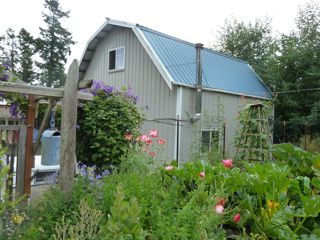 |
| 18"x38" sketch, ready to make a pattern for my quilt |
Bird of the Year
A friend gave me a book for Christmas called
Rare Encounters with Ordinary Birds by Lyanda Lynn Haupt. Haupt writes that your personal bird of the year is the first bird you see on New Year's Day--so in all likelihood, that bird will be an ordinary, every day, kind of bird. The idea is to observe and study your bird of the year, and discover that there is no such a thing as an ordinary bird, or for that matter, ordinary anything. Since I live on the shoreline of Puget Sound, my first bird sighting of the year was the ever-present seagull. I have quickly fallen in love with these very intelligent, family oriented birds that I've taken for granted for too many years.
Sketchbook Pro for Drawing
When I become enamoured with something, it usually means some quilts aren't far behind. Before the New Year, I had already planned out one large piece featuring seagulls feeding on a bait ball, (shown in an earlier post) but since I haven't collected enough fabrics to start work on that large-ish piece, I drew up this smaller sketch, using a photo I took on New Year's morning. To produce the sketch I used two pieces of software that I really like.
First of all, I used a drawing app called
Sketchbook Pro on my iPad. It's an app that costs about $4.99 (at least when I bought it a couple years ago.) Like Photoshop, the app has layers, the ability to import photos, merge them, use a wide variety of drawing tools, save multiple versions, and export the final product to iPhoto. I use a stylus on the iPad, and it's almost as comfortable as a pencil. I love that I can "pinch it big" when I want to work on a detailed portion of a drawing. I used to haul around a large sketchbook, pens, pencils, a small set of watercolors and a camera every where I went--I looked ready to scale Everest. Now I just take my iPad. It's got it all plus GPS so I can get home after wandering around.
PosteRazor for Printing it BIG
I used to go through all kinds of gyrations trying to enlarge my drawings to the size I wanted for a quilt--I've used overhead projectors, opaque projectors, grid enlargements, and Kinkos. But not any more thanks to a FREE (my favorite price) on-line program called PosteRazor. (There are probably other programs like this one, but this is the one I found first, and really like.) When I have a sketch that makes me itch to start cutting fabric, I export the sketch from Sketchbook Pro to iPhoto, and then import it to PosteRazor--a very easy process.
Once imported into PoasteRazor, the program asks you to select the size you want your image to be, and it then automatically converts the image to a PFD--all you have to do is hit the print button, and out comes your drawing on umpteen sheets of 8.5x11 paper. I don't know the upper size limits for printing, but I've had not trouble printing 5'x6' foot images. That's plenty big enough for my needs. It is a bit of a pain to tape all the sheets of paper together, and my main advice is DO NOT let the stack of papers get out of order under any circumstances, or you will become as looney as a box of frogs. (You can enlarge any image, including photos, but you'll mow through a whole lot of printer ink if you print a photo.)
Although it takes a bit of time to assemble all the pages of the printout, it takes FAR less time than dinking around with a jiggly overhead projector image or going to the mainland to visit Kinkos. This printout becomes my master drawing. It's what I use to make my freezer paper patterns. Unlike my hand drawn master patterns from the days of yore, if I mess this one up, the PosteRazor PFD is saved on my computer so I can print another. Yippee.



